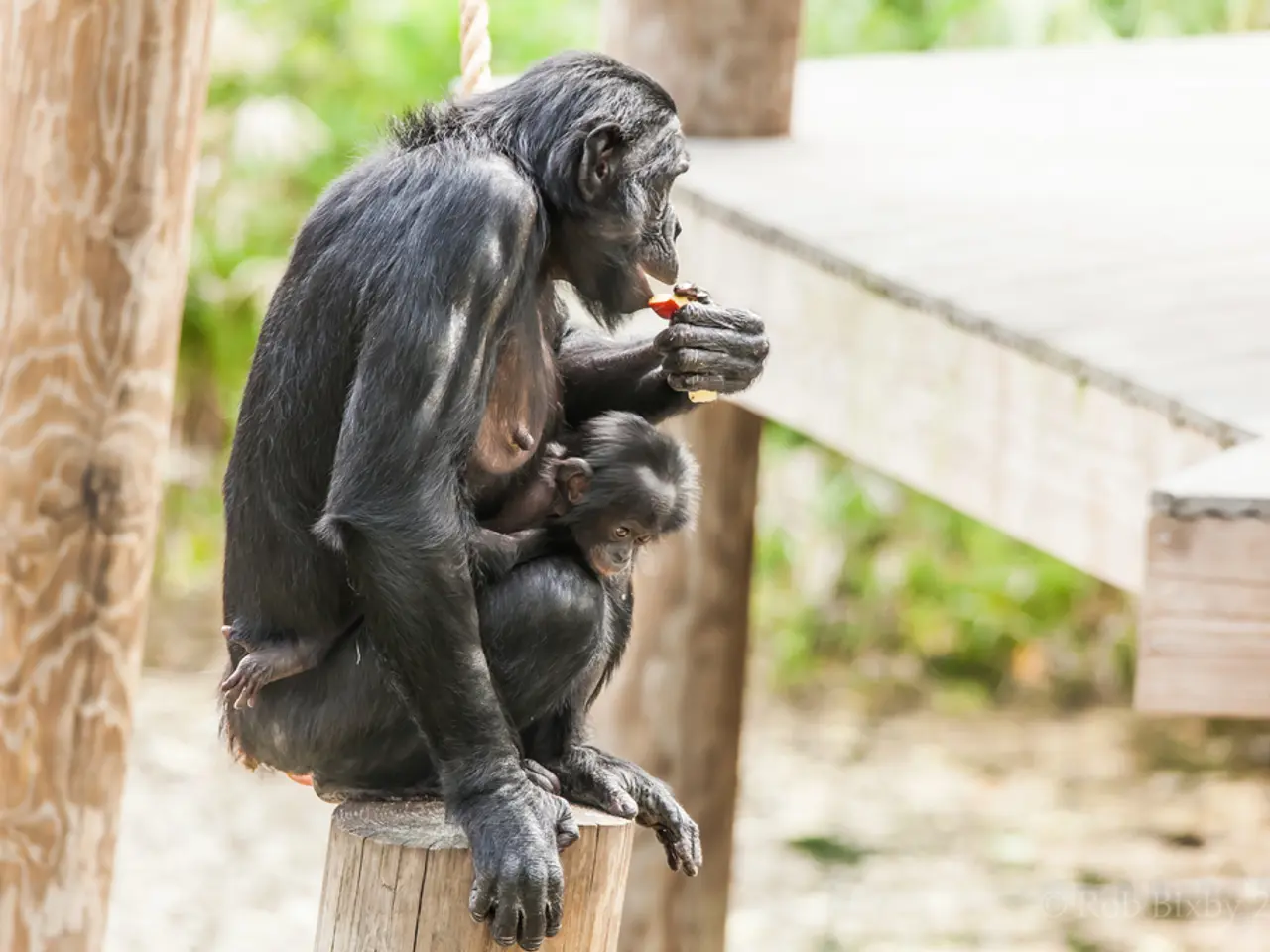Inquisition into the reasons behind tree-climbing among early human ancestors
In a study published in Frontiers in Ecology and Evolution, Dr Rhianna Drummond-Clarke from the Max Planck Institute for Evolutionary Anthropology in Germany and her team delved into the foraging behaviour of chimpanzees in the Issa Valley, Tanzania. The researchers aimed to understand why human ancestors, who started walking on two legs, continued to climb trees.
The Issa Valley, an open woodland habitat surrounded by riverbanks and small, thick forests, presents a savannah-mosaic environment similar to that faced by early hominins. The study observed chimpanzees during the dry season, recording their diet and foraging methods, as well as the size and height of the trees.
According to the researchers, chimpanzees commonly ate fruits, leaves, and flowers, which are often located at the end of branches, requiring them to climb trees safely. The apes were observed hanging under thin branches or standing upright and holding nearby branches with their hands to reach food on them. This frequent tree-climbing behaviour, despite living in mostly open habitat, suggests that arboreal activity was still crucial and may have influenced the retention of climbing traits alongside the development of bipedal walking.
The researchers found that chimpanzees navigated the canopy safely and effectively, suggesting that adaptations to arboreal living may have been key in shaping the early evolution of the human lineage. This discovery challenges the idea that bipedalism arose because early hominins needed to walk across an open savannah.
Drummond-Clarke's previous research suggested that bipedalism did not arise because early hominins needed to walk across an open savannah. Instead, it seems that the bipedal gait of early hominins may have continued to evolve in the trees even after the shift to an open habitat. More studies on different aspects of chimpanzee foraging are needed due to the lack of sufficient fossil evidence to make conclusions.
The study on chimpanzees was part of a broader effort to test if something about the chimpanzees' foraging behavior could explain their high arboreality (ability to live and spend time in trees). The findings from the Issa Valley provide valuable insights into the lifestyle of early hominins and suggest that a combination of terrestrial bipedalism and arboreal capabilities was crucial in their evolution.
References:
[1] Drummond-Clarke, R., et al. (2021). Why did early hominins climb trees? Frontiers in Ecology and Evolution.
[2] Wood, B., et al. (2019). Stable isotope analyses of fauna from the Issa Valley, Tanzania, reveal the diet and ecological niches of early hominins. Proceedings of the National Academy of Sciences.
[3] Cosmos (2021). Why did early hominins climb trees? Available at: https://cosmosmagazine.com/palaeontology/why-did-early-hominins-climb-trees
The study on foraging behavior of chimpanzees in the Issa Valley suggests that environmental-science findings, such as the apes' high arboreality, could provide insights into the evolution of early human lineages, challenging perspectives on the development of bipedal walking. This research further underscores the importance of understanding health-and-wellness aspects, like fitness-and-exercise, and their connection to science, particularly in environmental-science studies.
The findings from the Issa Valley experiment, in the broad perspective, are crucial for the advancement of science as they significantly contribute to our understanding of the early evolution of human ancestors, merging the domains of environmental-science, health-and-wellness, fitness-and-exercise, and overall human evolution.




